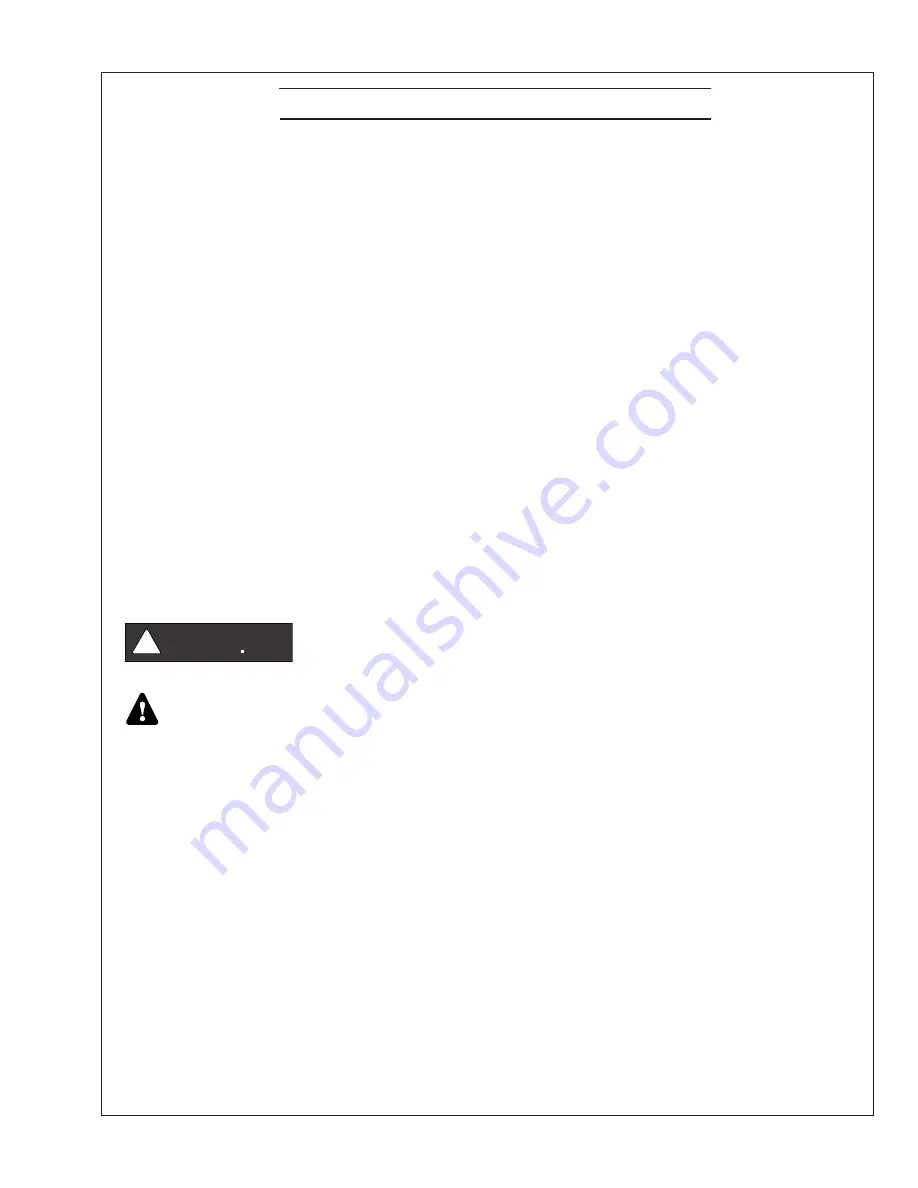
OM843NW3 5/21
13
BREAK-IN PERIOD
1. The first 100 hours on a new or reconditioned
engine are critical to its life and performance.
2. Operate the engine under various conditions,
particularly heavy loads to help seat engine
components properly. 50% load is required; 75% is
preferred.
3. Constantly check the engine temperature and oil
pressure gauges (sets with Series 3 or 4 panels).
4. Oil consumption is greater during break-in as
piston rings take time to seat.
5. Break-In Oil Changes: Change engine oil and
filter at 50 hours. Change oil and filter again at
100 hours, then at every 200 hours (consult
Lubricants section for oil recommendation).
BEFORE STARTING
1. Check the water level by removing the pressure
cap from the expansion tank or radiator. In order to
give the cooling water an opportunity to expand, the
expansion tank should be full. Overflow bottle should
be half full.
Do not open the filler cap when the engine is
warm. Opening a warm filler cap can cause
severe burns.
2. Check the oil level in the crankcase with the
dipstick. The oil level must be in the waffled area on
the stick. Never allow the level to go below this area.
Always add the same viscosity of oil as is already in
the crankcase. Do not remove dipstick when engine is
running.
3. Check the fuel tank level and open any fuel valves.
4. Check and clean the sea strainer and reopen the sea-
cock.
5. Place the battery switch in the ON position.
NOTE: The battery switch must always be kept
ON while the engine is running. If the switch is
turned OFF while the engine is running, the
battery charging regulator could be ruined.
STARTING
1. Hold the Shutdown Bypass-Preheat switch in the
ON position for 10 seconds before starting a cold
engine. Holding the switch too long can burn out the
glow plugs. This step is not necessary if the engine is
already warm.
2. While holding the Shutdown Bypass-Preheat switch
in the ON position, push the Engine Control switch to
the START position.
3. As soon as the engine starts, release the start switch
and continue to hold the bypass/preheat switch for
an additional five seconds. Do not crank the starter
for more than 10 seconds consecutively. If the engine
fails to start with the first attempt, be sure that it has
stopped completely before re-engaging.
NOTE: Excessive cranking of the starter on Marine
sets equipped with a water lift muffler can cause
engine damage. If the engine does not start after three
20-second cranks, remove the impeller from the raw
water pump. This will prevent the muffler from filling
with water and backfilling the exhaust line and engine.
Once the engine starts, shut it off immediately and
re-install the impeller. Re-start the engine and check the
exhaust overboard outlet for gushes of water.
OPERATING
1. Units with Series 3 and Series 4 Control Panels:
check gauges often. Oil pressure must be above 15
PSI. The D.C. voltmeter should read between 11 and
15 volts at 80°F (25°C) ambient temperature. The
water temperature gauge on Marine sets must be
below 200°F (94°C). Normal coolant temperature
is 167° to 194°F (75°C to 90°C). Check the A.C.
voltage and frequency meters (Series 4 panel). If the
gauges deviate from normal levels, shut down the gen-
erator set and investigate.
2. Let the unit run unloaded for a three to five minute
warm-up period.
3. Apply electrical load.
STOPPING
1. Remove electrical load from the generator set.
2. Run the engine for a 3 to 5 minute cool down period.
3. Hold the Engine Control switch to the STOP position
until the engine comes to a complete stop.
4. Shut off the seacock, fuel valve, and battery
switch.
Operating Procedures
Updated 10-3-19
!
DANGER
Summary of Contents for Lugger M843NW3
Page 55: ......
















































